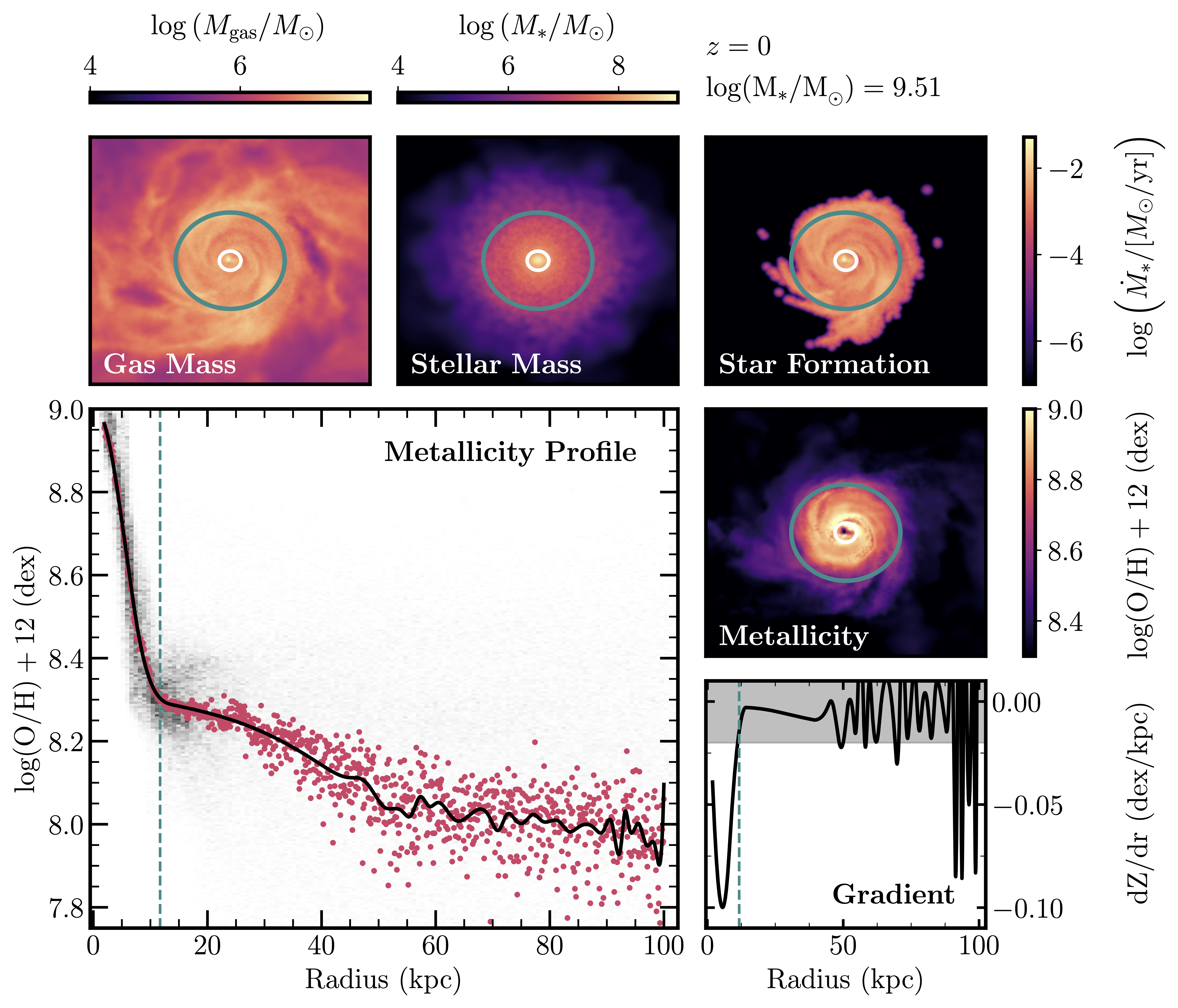Table of Contents
Research
I currently work in Paul Torrey’s group at the University of Virginia (formerly at Florida).
What do I study?
I am a theoretical astrophysicist studying how galaxies form and evolve using large-scale cosmological simulations. My research focuses on understanding the baryon cycle — how gas flows into, through, and out of galaxies — and how these processes shape the galaxies we observe today.
I specialize in developing and testing galaxy formation models, using numerical experiments to ask a simple but powerful question: How much of what our simulations predict actually depends on the model itself? By systematically varying simulation parameters, comparing different codes, and quantifying the resulting differences, my work aims to make galaxy simulations more predictive and physically transparent.
Recently, I’ve been leading efforts to integrate parameter sensitivity analyses directly into the simulation workflow—bridging theoretical modeling and observational data. This includes tuning the high-resolution SMUGGLE model for cosmological zoom-in simulations, and building the next-generation CONTRABAND suite: a community-driven framework for exploring how feedback physics and resolution shape galaxy evolution.
In short, I build and analyze simulations that not only show how galaxies evolve, but also how confident we can be in the physics driving those predictions.
Check out one of my recent SMUGGLE zoom-in runs below — a particularly well-behaved galaxy from a suite exploring how changes in stellar feedback affect its growth and structure.
Also check out this video I made of the first few galaxies in the DREAMS CDM suite of Milky Way-mass Halos
Talks/Posters
- Poster from the Summit for AI Leadership (SAIL) conference in Reston, VA
- Poster from the OpenSkAI conference in Chicago
- Poster from the Views on the Multi-Phase ISM conference in Bologna, Italy
- Video from the Recipes to Regulate Star Formation at all Scales conference in Baltimore, Maryland
- Poster from the Building Galaxies from Scratch conference I recently attended in Vienna, Austria
- Video from my UF master's project, for which I was awarded a scholarship for Outstanding Master's Thesis
First Author Publications (8)
See also: Full NASA/ADS Library (including co-author)
The DREAMS Project: Disentangling the Impact of Halo-to-Halo Variance and Baryonic Feedback on Milky Way Dark Matter Density Profiles
To be submitted, November 2025
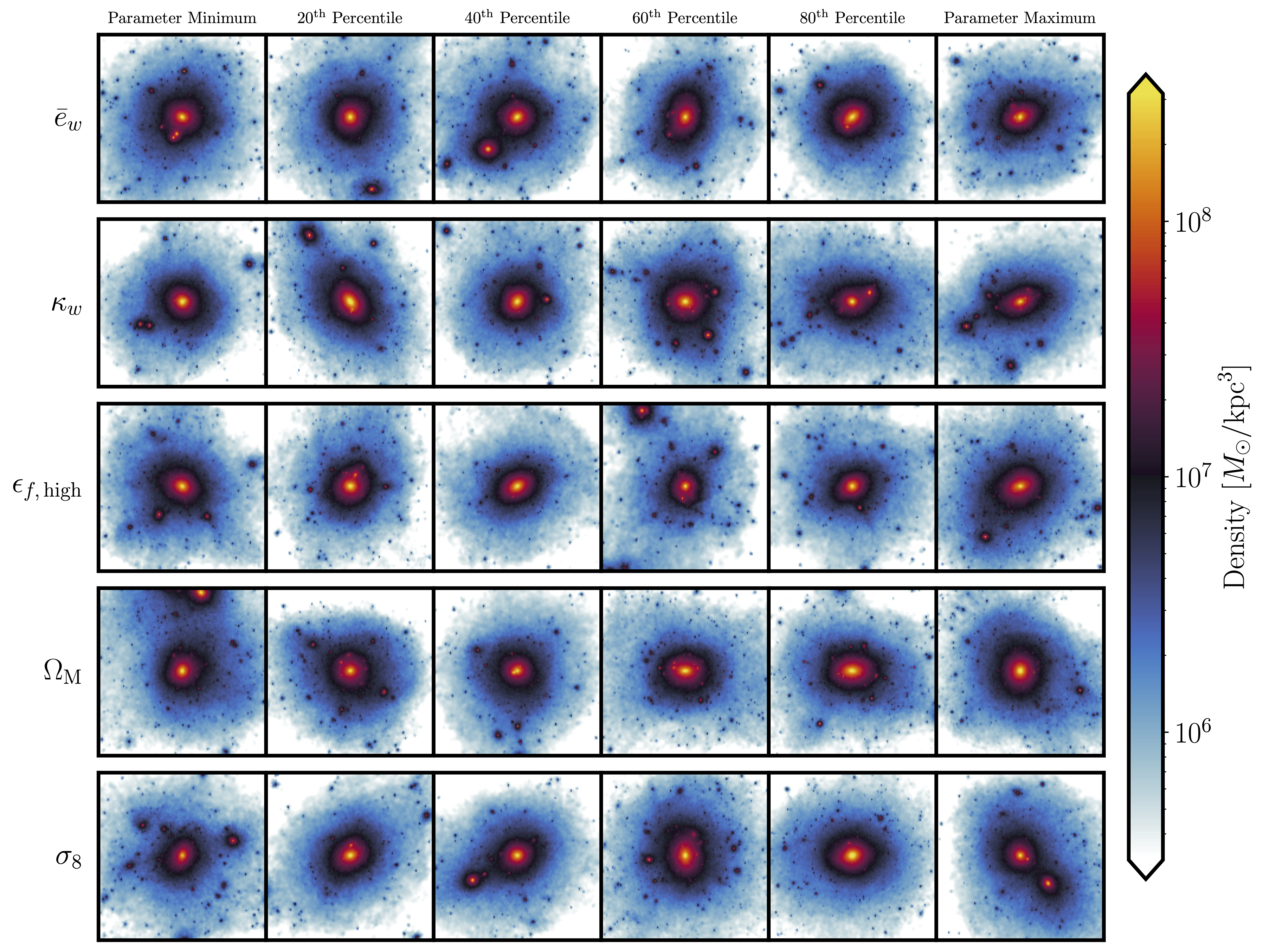
Check out:
- Poster about this paper
- Poster about the DREAMS project
- DREAMS project website
Metallicity Gradients in Modern Cosmological Simulations II: The Role of Bursty Versus Smooth Feedback at High Redshift
Submitted October 2025
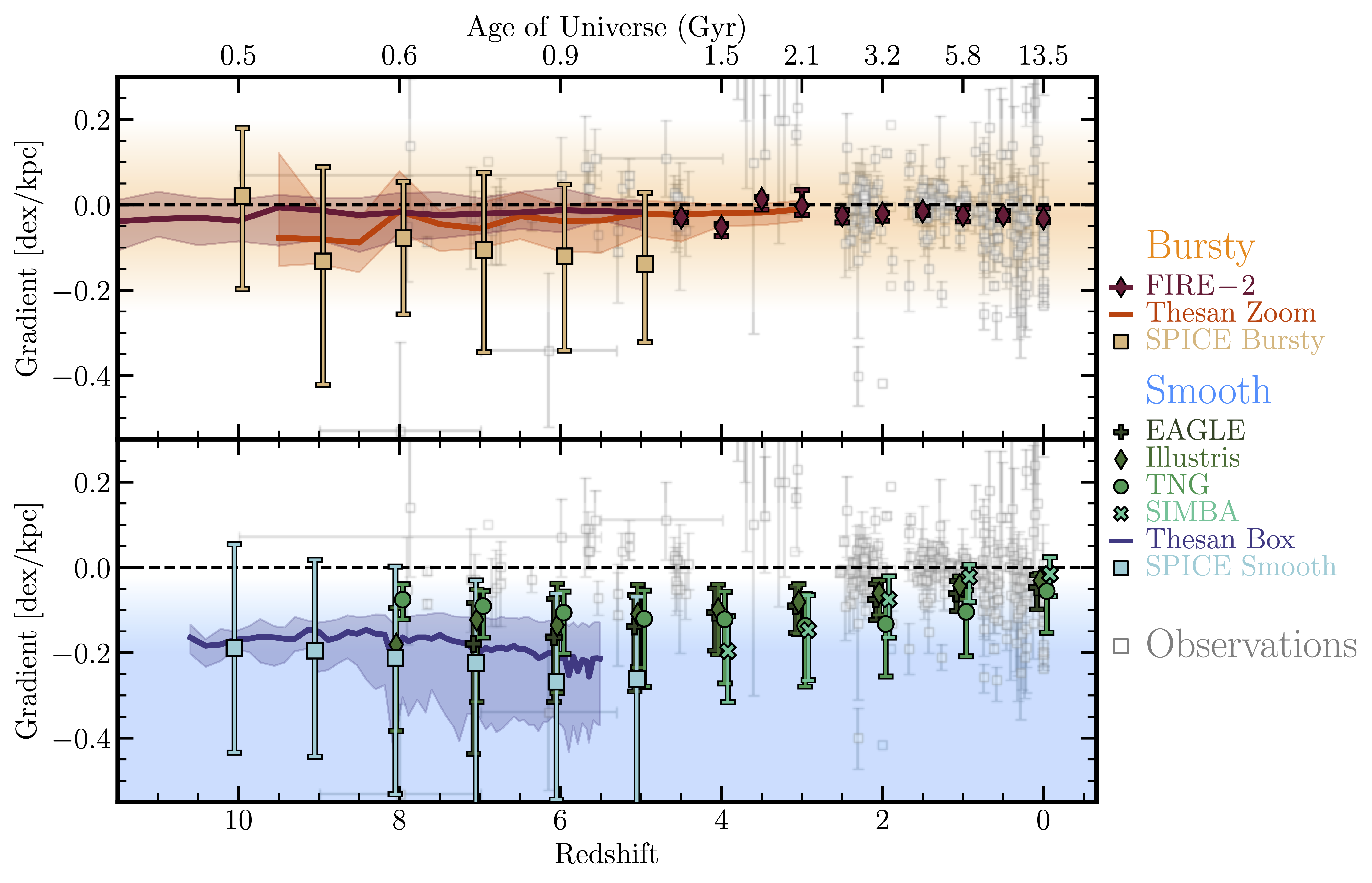
Metallicity Gradients in Modern Cosmological Simulations I: Tension Between Smooth Stellar Feedback Models and Observations
Accepted to ApJ July 2025!
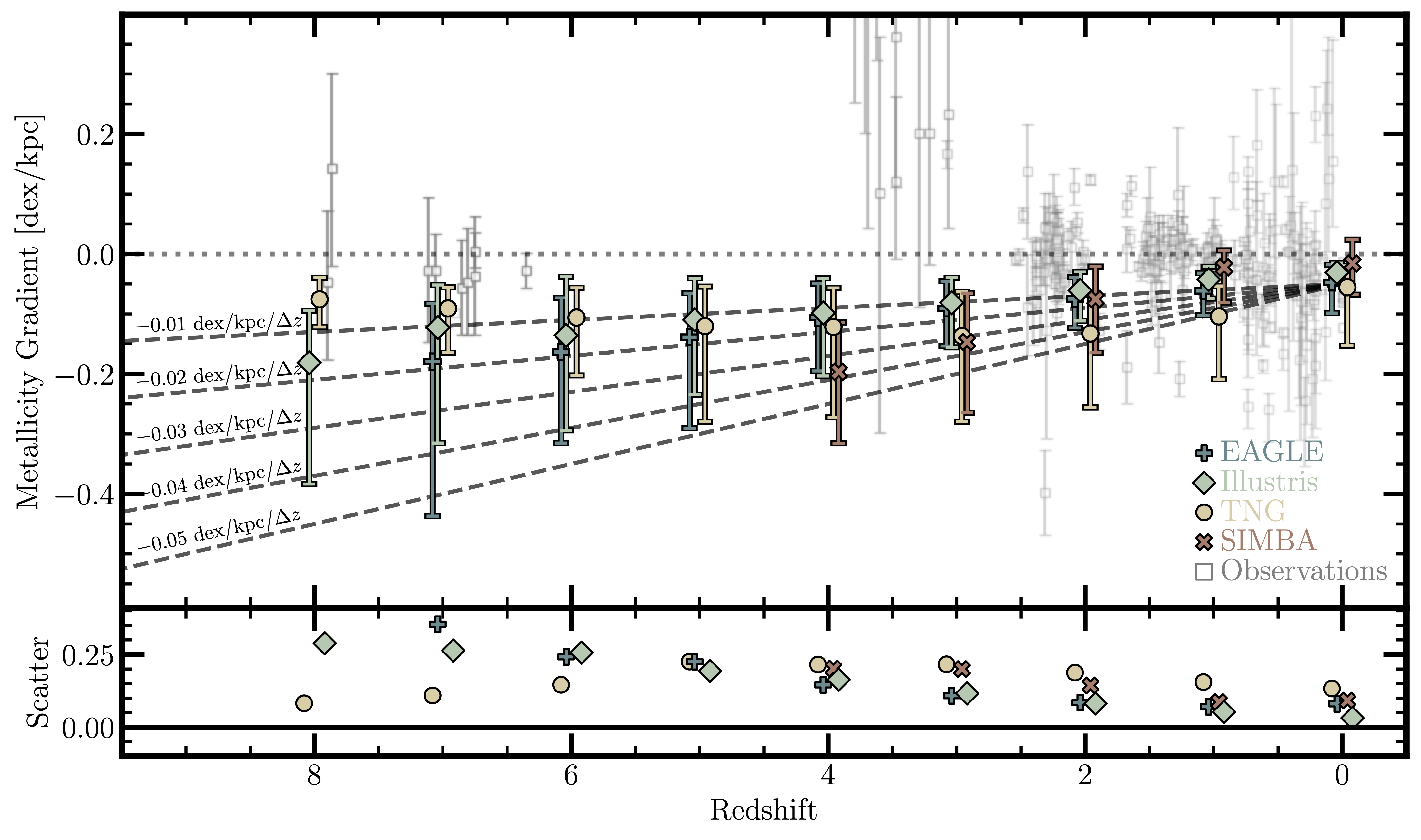
Star-Formation, Metallicity, and Stellar Mass on kpc-scales in IllustrisTNG
Accepted to ApJ September 2025!

This work is led by Alex Qi, a former graduate student at the University of Florida. I took over this project in September 2024 and finished the analysis + wrote the paper
Does the Fundamental Metallicity Relation Evolve with Redshift? II: The Evolution in Normalisation of the Mass-Metallicity Relation
Accepted to MNRAS January 2025!

Does the Fundamental Metallicty Relation Evolve with Redshift? I: The Correlation Between Offsets from the Mass-Metallicity Relation and Star Formation Rate
Accepted to MNRAS May 2024!

Check out: talk about this project.
Interplay of Stellar and Gas-Phase Metallicities: Unveiling Insights for Stellar Feedback Modeling with Illustris, IllustrisTNG, and EAGLE
Accepted to MNRAS March 2024!

Teaching
| Institution | Course | Semester |
|---|---|---|
| University of Virginia | Astr 1220 - Introduction to the Sky and Solar System | Fall 2025 |
| Astr 2120 - Introduction to Astrophysics | Fall 2024 | |
| Astr 1250 - Alien Worlds* | Summer 2024 | |
| Astr 4470 - Computational Astrophysics | Spring 2024 | |
| Astr 3880 - Planetary Astronomy | Spring 2024 | |
| Astr 1220 - Intro to Stars, Galaxies, and the Universe | Spring 2024 | |
| Astr 5110 - Astronomical Techniques | Fall 2023 | |
| University of Florida | Ast 1022 - Astronomy Labratory* | Spring 2023 |
| Ast 1022 - Astronomy Labratory* | Spring 2022 | |
| Ast 1002 - Discovering the Universe | Fall 2021 | |
| University of Illinois** | Astr 330 - Extrterrestrial Life | Spring 2021 |
| Astr 330 - Extraterrestrial Life | Winter 2020 | |
| Astr 100 - Introduction to Astronomy | Fall 2020 | |
| Astr 150 - Killer Skies: Astro-Disasters | Fall 2020 |
| Course | Semester |
|---|---|
| Florida | |
| Astronomy Labratory* | Spring 2023 |
| Astronomy Labratory* | Spring 2022 |
| Discovering the Universe | Fall 2021 |
| Illinois** | |
| Extrterrestrial Life | Spring 2021 |
| Extraterrestrial Life | Winter 2020/2021 |
| Introduction to Astronomy | Fall 2020 |
| Killer Skies: Astro-Disasters | Fall 2020 |
*Primary instructor of course
**Undergraduate Grader
University of Florida Astronomy 1022 Lab Manual
Originally compiled in 1997 and sparsely been updated since, I translated the old version into LaTeX and implemented much needed content updates.
This manual is a required text for all students enrolled in the Astronomy 1022 lab course. To this day, students (and instructors) are still benefitting from the revisions that I implemented.
ALEX Labs
In addition to the lab manual, I implemented new computer lab software into the curriculum.
These labs are inspired by the Contemporary Lab Experiences in Astronomy (CLEA) Labs created by Gettysburg College.
CLEA labs ceased operations around 2016.
The labs that I have programmed are You Can Weigh Jupiter (based on the CLEA lab of the same name), Astronomical Spectroscopy II (based on "The Flow Of Energy Out Of The Sun" by CLEA), and Measuring the Hubble Constant (based on the CLEA lab of the same name).
These labs are hosted here on my website. Click the button below to see them.
Kika Silva Pla Planetarium
(2021-2023)

What did I do at the Planetarium?
The planetarium hosts weekly events on Fridays and Saturdays.
The show topics range from educational to entertaining and all serve to get the public more interested in space and astronomy.
My favorite accomplishment during my time at the Planetarium was learning to perform "Florida Skies", an hour long show giving the public a tour of the night-time sky.
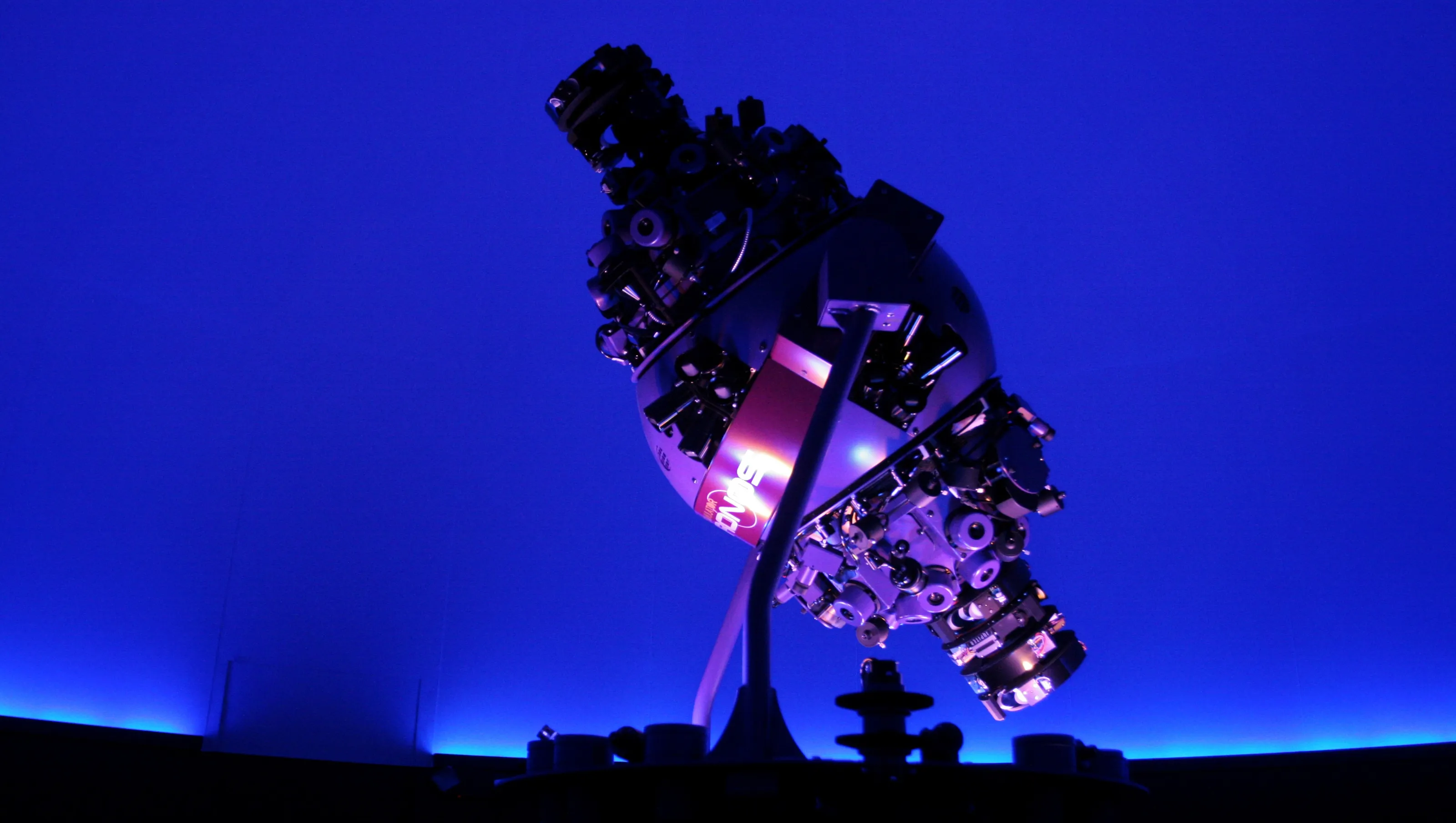
Show Credits
Florida Skies Winter, Spring, Summer, and Autumn - "Host", "Planetarium Staff"
Music 360: Gustav Holst's The Planets - "Production Crew"
Dynamic Earth - "Closed Captions for KSP"
Center for Academic Resources in Engineering (CARE) at UIUC
(2018-2021)
During undergrad, I tutored for the College of Engineering.
I tutored a number of different courses ranging in disciplines.
During my junior year, I was appointed to the leadership team.
My work as a tutor had a significant, positive impact on my fellow students.
Three to four times a week for nearly 3 years, I would field many questions on a variety of different subjects (listed below).
I was recognized during my last semester as being honored with Tutor of the Year Honorable Mention at the University level.
- 100 (Thinking About Physics)
- 211 (Introductory Mechanics)
- 212 (Introductory E&M)
- 213 (Introductory Thermodynamics)
- 214 (Introductory Quantum Mechanics)
- 225 (Relativity and Math Applications)
- 115 (Preparation for Calculus)
- 220/221 (Calculus I)
- 231/231E (Calculus II)
- 241 (Calculus III)
- 285 (Differential Equations)
- 415 (Linear Algebra)
- 101 (Introduction to Computing -- Python)
Exam Review Sessions
These events are office hours sytle: two hours in length where students can come and ask a small team of tutors any questions about their course in preparation for exams
During the summer before my senior year of undergrad, I aided in creating new worksheets for these sessions.
Data Analysis
I also looked at the traffic patterns of our walk-in tutoring center. I assembled monthly and semesterly reports and presented to our entire team.
Undergraduate Research
(2020-2021)
Professor Bryan Dunne
My work with Professor Dunne was focused on beginning research methods. Our group, made up of three undergraduate students, worked on an observation project on variable stars of the RR Lyrae variety.
One of the first modules had us get familiar with the photo-editing program Gimp. We chose a supernova at random, requested composite images, and stacked them together in Gimp. Below is the result.

Professor Yue Shen
My (very brief) work with Professor Shen was centered on SDSS DR16 looking at quasars. My small part in this project was to translate an IDL script into Python. The script filtered out this noise and give a much neater spectral emission line.

